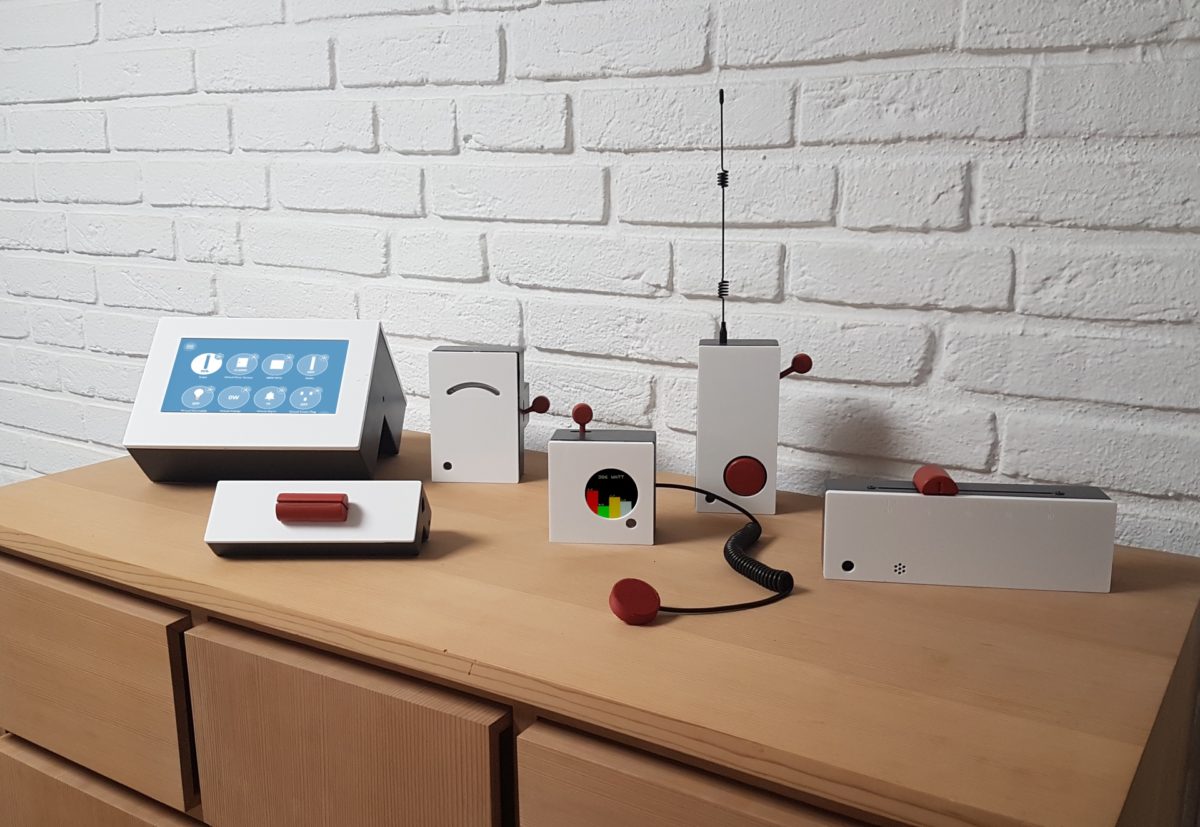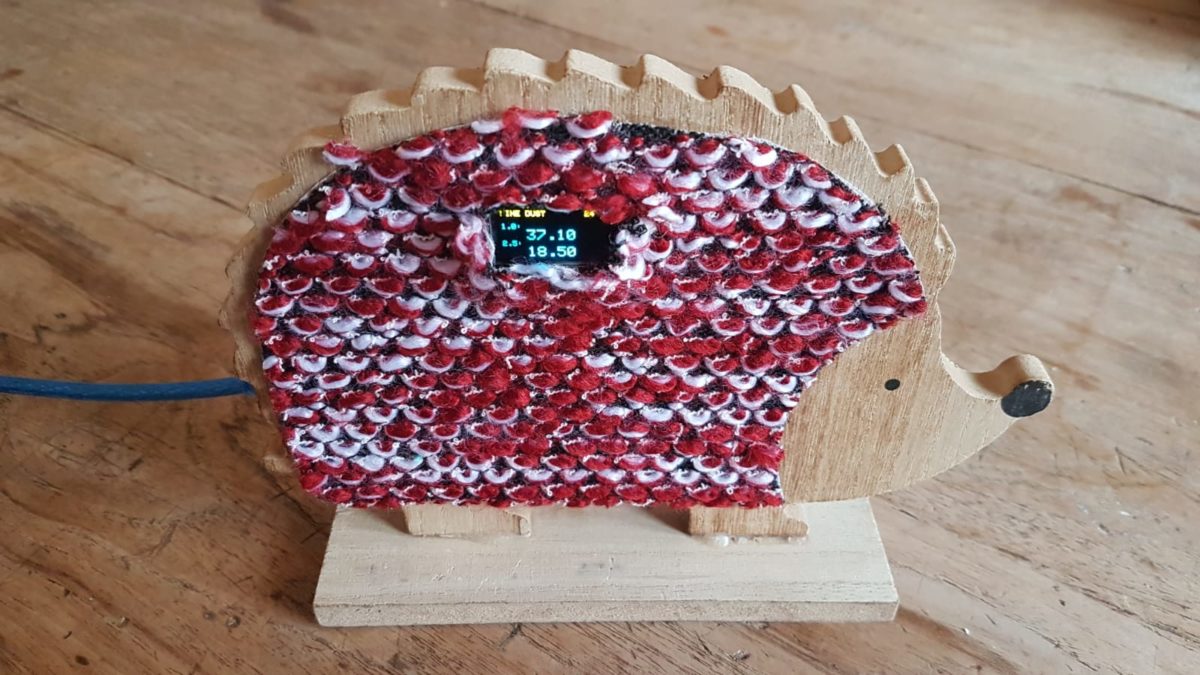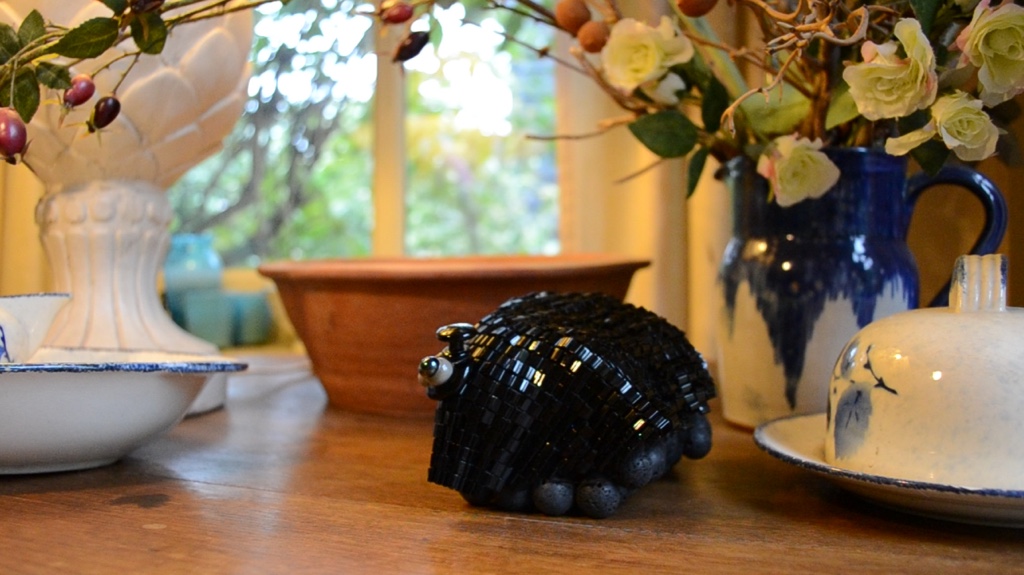Candle is a privacy friendly smart home of the future. It explores how privacy by design principles could (and should) be applied when creating ‘smart information systems’. In 2020 it won a Dutch Privacy Award.
Candle builds on the Design My Privacy book I wrote in 2016, and that is used in education in the Netherlands and Germany. Having more examples of ‘good’ privacy design is something students asked for. Candle puts the theory into practice. For example, the book proposes to give all smart home devices a simple physical slider switch that allows consumers to select if the device may talk to the cloud, only to the local network, or not at all. Candle devices have these switches, and in the case of Jesse Howard’s creations (shown below) they are very pronounced, and invite toggling often.

Jewely designer Dinie Besems also created a number of devices. They visualise a future where privacy has become a luxury product. She added ‘skirts’ to her devices so that users could easily hide the the values that are shown on the displays of smart home devices. This helps avoid awkward situations, and could even turn the act of looking at your data into a ritual, where you ‘lift the skirt’, but otherwise keep this data hidden.

Principles
Candle turns a few of the current ‘Internet of Things’ design paradigms on it’s head. For example, while the things to communicate wirelessly, they themselves do not connect to the cloud, and don’t need to. While it’s possible to connect the central controller to the internet, this is not the default. While this “edge first” approach may seem like a compromise at first, it actually has a lot of advantages. For example, it’s very difficult to hack a your smart device if it’s not connected to the internet.
Similarly, to restore some of the trust in these solutions, the devices are purposefully open and transparent. To create a Candle device you order the parts and you connect the electronics yourself, which means there should be no surprise hidden microphones, as was the case with one of Google’s Nest devices. The code for the devices themselves is also open source, which makes it easy to audit and to use in education.

Privacy Aesthetic
Over the summer of 2019, Dinie Besems and Jesse Howard developed speculative designs for the project, exploring what a ‘privacy aesthetic’ could look like. The idea is that you can easily pick out healthy, ecological food when you go to the supermarket: it looks different from the other products.
How could consumers recognise privacy friendly products?
While they dove into this research question two amateur artisans were also asked to also integrate the Candle project into their home. Engineer and educator Paola Rodrigues created two.
All creations were presented at the Dutch Design Week 2019, where the project was officially launched.

Local voice control
Candle features fully local voice control. Through my work as part of the Sherpa consortium I was able to develop Voco, an addon for the Mozilla WebThings Gateway that implements the most popular voice control abilities. It allows you to set timers, reminders, alarms and control devices – all without any cloud connection. Voco builds on Snips, a voice control platform developed by french company Snips.ai (which has since been bought by speaker manufacturer Sonos).
This aspect was a response to the scandals around voice recordings listened to by third parties and having those recordings leak and end up in many other places. Candle demonstrates how in many cases “AI” algorithms could run “at the edge” instead of in the ‘cloud’. This reflects on the work of Sherpa, a Horizon 2020 project which explores upcoming societal issues in Smart Information Systems. It shows that we are not at the mercy of ‘AI’ systems, but through careful design can tame and tackle these issues.
In the media
The project was received attention on Slashdot, Nu.nl (video), BNR, Reddit, smarthomemagazine, DutchCowboys, Emerce, Gigazine and Ameblo (Japan), Smarthomeweb, PlaceTech (interview), Briljant (tv), and many other places.



Support
In 2019 the project was supported by the Creative Industries Fund NL. The development of voice control and the exhibition were supported by the EU through Sherpa, as it puts into practice some of the consortium’s recommendations. In 2020 a grant from the SIDN fund allows for continued development and research.
The technology builds on the amazing work of the MySensors community, the Arduino community, as well as the WebThings Gateway, a brand new smart home control project by Mozilla (the makers of Firefox), and many other open source projects.


